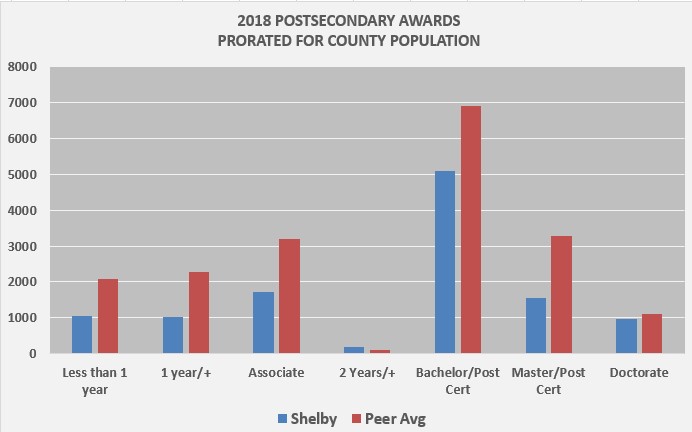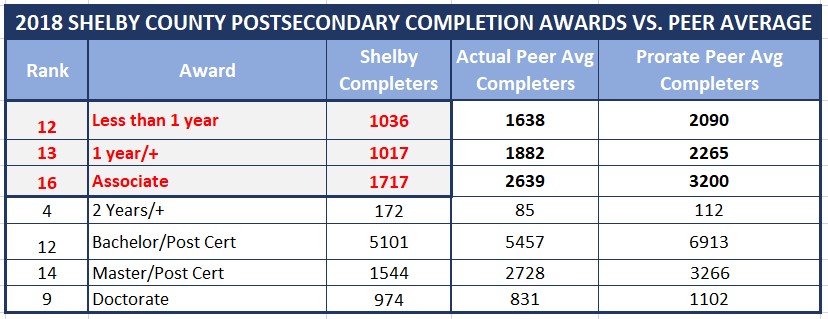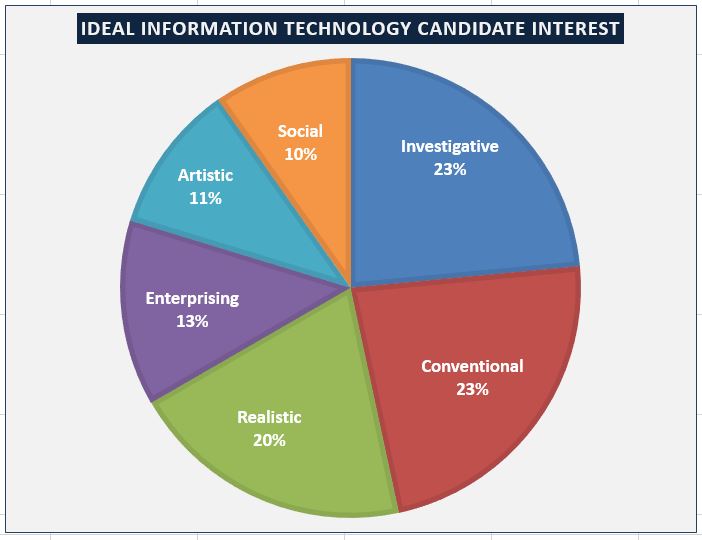In many ways, the Memphis workforce development system faces the same work that will likely be asked of learners related to their career pathways planning efforts. The work is as follows:
- Where are we ? – Benchmarking / Learner Self Exploration
- Where do we want to go ? – Workforce Goals / Learner Career Exploration
- How do we get there ? – System Planning / Learner Career Planning
- Implement workforce development plan / Learner pursues career pathway through lifelong learning and employment
- Measure, evaluate and course correct as needed
In this blog, we will bust out a couple of more data sets to help target and expedite ecosystem and employer demand driven workforce development. “Expedite” is key and away from the “long haul” of workforce development implementation that has never worked.
First, let’s define terminology that will help us target occupational groups for promotion as informed by UpSkill901, local ecosystem and employer demand. “Location quotient (LQ)” defines the concentration of a particular occupation or occupation group within a given geographic area compared to the nation.
This targeting methodology, ideally would be folded into a workforce development plan. Again, from the previous blog, fundamentals of any connected workforce development plan and deployment of career pathways consists of “common language” development with 1) a unifying measurable definition for “career readiness” applicable to diverse target audiences 2) employer demand data, 3) occupationally aligned assessments, preferably universally recognized to support economic development efforts, 4) career pathways curriculum alignment and planning, 5) professional development and typically 6) centralized technology to reduce implementation costs.
In addition to LQ to target high need occupational groupings that are ecosystem/employer demanded, we will also reference postsecondary award completion data.
Expediting Benchmarking
In this example case, lets say that we want to expeditiously identify, promote, enroll and graduate (IPEG) more individuals in high need career pathways. High need occupational groups would need to be identified which point to opportunities to accelerate talent development while increasing completion rates.
So how might we identify high need occupational groups? Based on ecosystem/employer demand and coming automation, that might point to the need to identify more learners interested in computer technology, entrepreneurship/business and arts/music entertainment. Computer technology and business occupations serves all industries while music serves the local culture and tourism industry.
But is there a high need for a promotional intervention for these specific occupational groupings? Let’s bust out a data set and see. In the below data set, we can see that that there is a low concentration (LQ) of less than 1.0 when compared to the nation and versus 15 peer cities, in computer, business/finance and entertainment occupational groupings, Memphis ranks 15 or 16 in LQ. And all of these groups pay a good wage.
To that extent, low LQ benchmarks are validated which supports a promotional intervention to increase enrollment in career pathways for the occupational groupings of computer, business/finance and arts/entertainment.
The above benchmarks would point to an opportunity to accelerate talent development while increasing completion rates. Lets bust out another data set. Below is a table that shows how Shelby County completion rates, across award levels, rank versus 15 peers. Low hanging fruit opportunities to increase completion rates can be found in 2 year awards and less while promoting lifelong learning for Bachelors and beyond. The actual and prorated for population peer completions are shown below. Rankings are based on the prorate for population peer average.
Expediting Goal Setting
Here, we are focus on expediting workforce development implementation and not the “long haul” because that does not work. Let’s generate some sample simple, measurable, achievable, relevant and time bound (SMART) goals based on the benchmarking in the former sections:
- Increase computer technology postsecondary awards by 200 per year
- Increase business/finance postsecondary awards with a focus on entrepreneurship by 200 per year
- Increase arts, entertainment and media postsecondary awards by 50 per year
The above example SMART goals are not all inclusive of all occupational groupings that might require a promotional intervention. But such goals would be rolled into a workforce development plan.
Expediting Implementation Away from the “Long Haul”
Ultimately, various regularly administered technology based assessment tools, like the one shown above, will probably be implemented to facilitate learner identifcation, promotion, enrollement and graduation (IPEG) in student aligned career pathways. But connected implementation should not wait for the perfect implementation model and should start right away.
For whatever reason, while stating workforce development as the #1 priority to be a “long haul”, implementation never seems to get off the ground in Memphis. Its like everyone, to get started, is waiting for a pageantry event kickoff and perfect plan that will never exist.
The way to get started, right away, is to formally distribute, via whatever means, data and talking points to educational and workforce development practitioners so that they can begin integrating career pathways content into their instructional thinking, planning and practice and having collaborative conversations. In the report Education to Employment: Designing a System that Works, McKinsey says to “Get the information out”. The implementation will evolve from those conversations once the data and information is distributed to the public.
Optimal implementation will take time in the implementation of programming, but should not wait until everything is perfectly ready to go. For example, getting standards aligned career pathways curriculum implemented into the curriculum will not be overnight. Such curriculum will facilitate the implementation of IPEG which will allow practitioners and stakeholders to identify students through a range of assessments for promotion into specific career pathways enrollment aligned to learners’ interests, preferences and skills.
Conclusion
In this blog, in a sample case, we have used a labor market information methodology to benchmark where we are with respect to postsecondary completions and high need occupational groupings that need promotional intervention and where we want to go in the form of SMART goals that would be folded into an ever evolving and imperfect connected plan.
There are certain foundational tenants and organizing principles that need to be introduced right away that are not going to change related to the work of connected workforce development. Examples include:
- Benchmark, Goals, Plan and Implement
- Data, Assessment and Career Pathways Curriculum
- Identify, Promote, Enroll and Graduate (IPEG)
But the above will be ongoing and its never going to be perfect. As emphasized, in the blog about a year ago, don’t talk about the “long haul”, Go and get started !




